How to add exceptions in Windows Defender on Windows 10
Windows Defender, integrated into Windows 10, runs in the background and scans files for malware. To improve performance for tasks such as compiling code or running virtual machines, you can add exceptions and Windows Defender will never scan those files.
Warning : Be careful about what you exclude. Windows Defender will not scan excluded files and folders for malware.
How to add exceptions in Windows Defender on Windows 10
Step 1:
First, you need to launch Windows Security to change some settings. Open the Start menu and enter Windows Security . Then select the Windows Security application .
Step 2:
In Windows Security , navigate to Virus & Threat Protection . Then click Manage Settings.
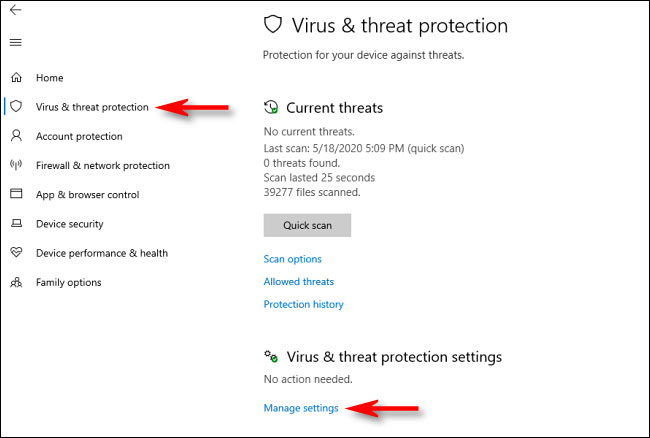 In Windows Security, navigate to Virus & Threat Protection
In Windows Security, navigate to Virus & Threat Protection Step 3:
In Virus & Threat Protection Settings , scroll to the bottom of the page and click Add or Remove Exclusions .
Step 4:
On the Exclusions page , you can add or delete files that you want to exclude from the Windows Defender scan. To add an exception, click the Add An Exclusion button next to the large plus ( + ) symbol .
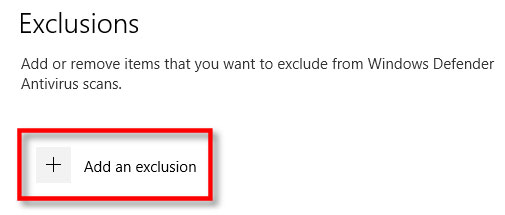 Click the Add An Exclusion button
Click the Add An Exclusion button Step 5:
A small menu will appear allowing you to specify exceptions by File, Folder, File type or Process (file, folder, file type or process).
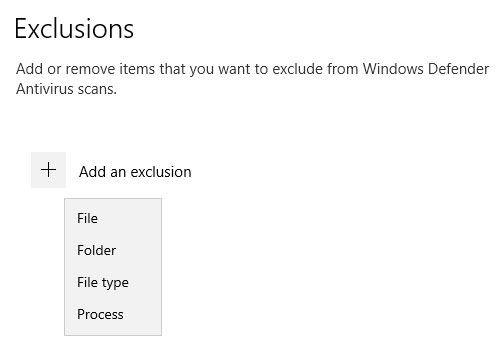 A small menu will appear allowing you to define exceptions
A small menu will appear allowing you to define exceptions What you choose depends on the type of exception you are trying to make. This is what each option will do.
- File: If you select this item, a box will appear allowing you to browse the computer to select a file to be excluded from future scans. Select the file you like, then click Open.
- Folder: Like the File option , this will allow the computer to search for a specific folder and exclude it from the scan. Content and subfolders in this directory will also be excluded.
- File type : A box will appear asking you to enter the file extension (e.g. .MID ) representing the file type that you can exclude. All files of that type will be excluded from future scans. This is very dangerous, because you can accidentally exclude a large group of potentially malicious files, such as PDFs or DOCs.
- Process : A window will appear asking you to enter the name of a process (a running program, such as explorer.exe ) to exclude from the scan. If a program you know is safe, but it will be flagged by Defender, you can enter it here.
Choose one of these options and make the necessary selections in the following pop-up dialog box. When you add an exception, it will display in a list on the Exclusions page .
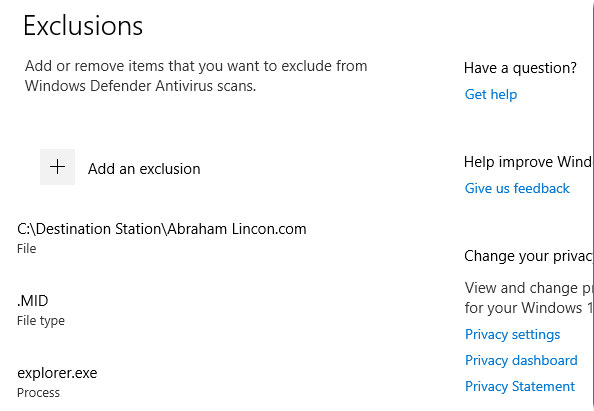 Exceptions will appear in a list on the Exclusions page
Exceptions will appear in a list on the Exclusions page Step 6:
If you want to delete a specified exception, move the mouse pointer over the item until the down arrow appears, then click the Remove button .
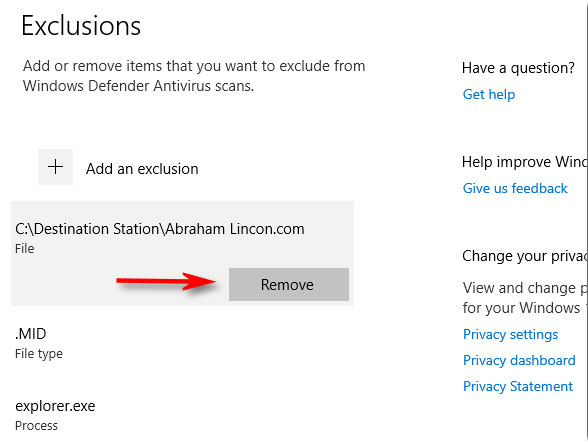 Click the Remove button to remove the exception
Click the Remove button to remove the exception Step 7:
When done, close Windows Security and your settings will be saved. The next time the system performs a Defender scan, the items you have added to the exclusion list will no longer cause trouble.
You should read it
- How to fix errors cannot open Windows Defender on Windows 7/8/10
- Use Windows Defender with Command Prompt on Windows 10
- How to kill viruses with Windows Defender Offline on Windows 10 Creators
- How to use Windows Defender to scan programs that do not want PUP?
- Instructions to turn off Windows Defender completely on Windows 10
- How to Turn Off Windows Defender in Windows 10
 After the May 2020 Update (20H1) update, what to expect on Windows 10?
After the May 2020 Update (20H1) update, what to expect on Windows 10? How to switch from RAID to AHCI without reinstalling Windows 10
How to switch from RAID to AHCI without reinstalling Windows 10 Where does Windows 10 store default wallpapers?
Where does Windows 10 store default wallpapers? How to enable transparent background on Windows Terminal
How to enable transparent background on Windows Terminal How to delay starting OneDrive on Windows 10/8/7
How to delay starting OneDrive on Windows 10/8/7 How to use winget - New Package Manager for Windows 10
How to use winget - New Package Manager for Windows 10